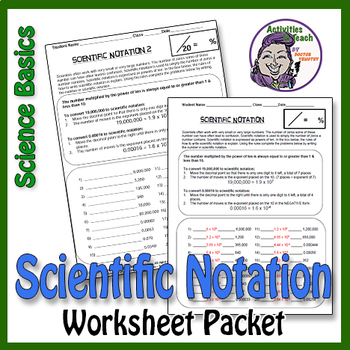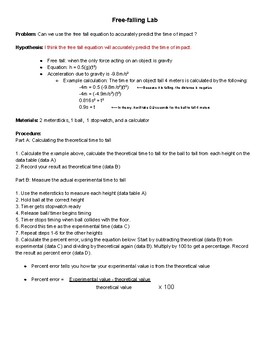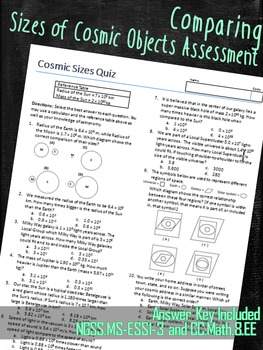5 results
Common Core 8.EE.A.2 laboratories

Science Measurement: Scientific Notation Worksheet Packet
Great practical science basic worksheets focused on the writing scientific notation with both positive and negative exponents.CLICK HERE to SAVE 20% on this activity with our Science Basics Measurement Bundle.This 4 page packet include 2 worksheets and answers keys for each of the 4 worksheets.Perfect for warm up exercises, classroom worksheets, and homework packets.If you like this science basic skill packet, check out our other packets:Science Basic Determining Density PacketScience Basic Read
Subjects:
Grades:
6th - 8th
Types:
Also included in: Science Measurement Bundle + Bonus Activity

Collision Lab: Introduction to Momentum
**Updated to match updates in Phet simulation**Students ...Explore non-sticky collisionsInvestigate the Law of Conservation of MomentumDerive the equation for momentum Solve collision problemsNGSS Addressed: MS-PS2-1. Apply Newton’s Third Law to design a solution to a problem involving the motion of two colliding objects.*Cause and Effect Cause and effect relationships may be used to predict phenomena in natural or designed systems. (MS-PS2-3),(MS-PS2- 5) Systems and System Models Models can be
Subjects:
Grades:
7th - 9th

Math Discovery Lab: Square Roots, Multiples of 10, Rational vs Irrational
This is one of a series of self-guided discovery labs for a meaningful understanding of core mathematical concepts. Students use the familiar format of the scientific method to answer a mathematical question/problem. In this lab, students investigate the relationships among square roots, perfect squares, and positive and negative powers of ten (10). This math lab also explores when the square root of numbers such as 0.016, 0.16, 1.6, 16, 160, 1600 are rational or irrational. Full answ
Subjects:
Grades:
4th - 10th
Types:

Free Fall Lab
In this lab, students first use the free fall equation to calculate the theoretical time for a ball to fall from four different heights. Second, they do an experiment and record the actual time to fall. Third, they calculate the percent error between the two times. It is designed as an introduction to the free fall equation and provides a common experience for the teacher to expand upon. It also serves as a method for calculating percent error.Materials needed: 2 metersticks1 ball1 stopwatch (or
Subjects:
Grades:
7th - 12th
Types:

8.EE Common Core Scientific Notation Cosmic Objects Assessment
Assessment for a math or a science class. In this assesspent students are asked to Perform operations with numbers expressed in scientific notation, including problems where both decimal and scientific notation are used. Interpret scientific notation to determine the relative sizes of objects in the solar system and the universe. Compare the sizes of objects using the concept of proportionality.
Answer Key Included
NGSS and Common Core Aligned
Grades:
6th - 12th
Types:
Showing 1-5 of 5 results

